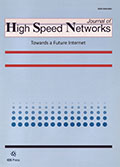Authors: Won, Chulho | Lee, Ben | Yu, Chansu | Moh, Sangman | Park, Kyoung | Kim, Myung‐Joon
Article Type:
Research Article
Abstract:
This paper presents a performance study of UDP/IP, TCP/IP, and M‐VIA using Linux/SimOS. Linux/SimOS is a Linux operating system port to a complete machine simulator SimOS. A complete machine simulator includes all the system components, such as CPU, memory, I/O devices, etc., and models them in sufficient detail to run an operating system. Therefore, a real program execution environment can be set up on the simulator to perform detailed system evaluation in a non‐intrusive manner. The motivation for Linux/SimOS is to alleviate the limitations of SimOS (and its variants), which only support proprietary operating systems. Therefore, the availability of the
…popular Linux operating system for a complete machine simulator will make it an extremely effective and flexible simulation environment for studying all aspects of computer system performance, especially evaluating communication protocols and network interfaces. The contributions made in this paper are two‐fold: First, the major modifications that were necessary to run Linux on SimOS are described. These modifications are specific to SimOS I/O device models and thus any future operating system porting efforts to SimOS will experience similar challenges. Second, a detailed analysis of UDP/IP, TCP/IP, and M‐VIA is performed to demonstrate the capabilities of Linux/SimOS. The simulation study shows that Linux/SimOS is capable of capturing all aspects communication performance, including the effects of the kernel, device driver, and network interface.
Show more
Keywords: SimOS, complete system simulation, Linux, instruction set simulators, UDP/IP, TCP/IP, M‐VIA
Citation: Journal of High Speed Networks,
vol. 13, no. 3, pp. 169-182, 2004
Price: EUR 27.50





